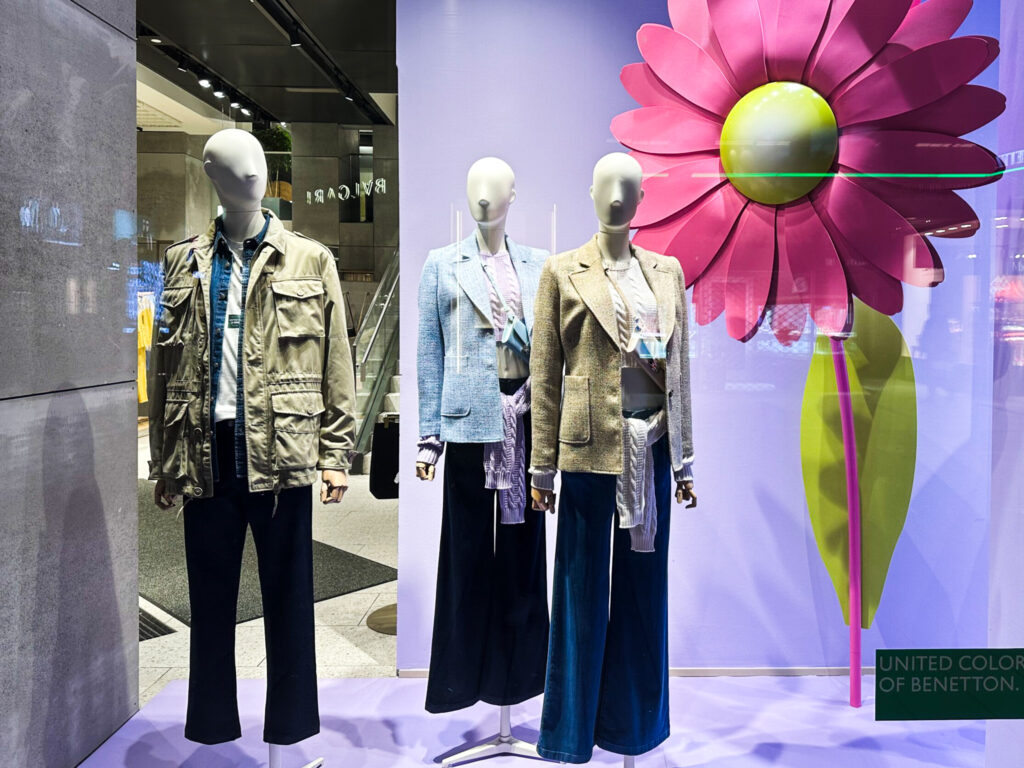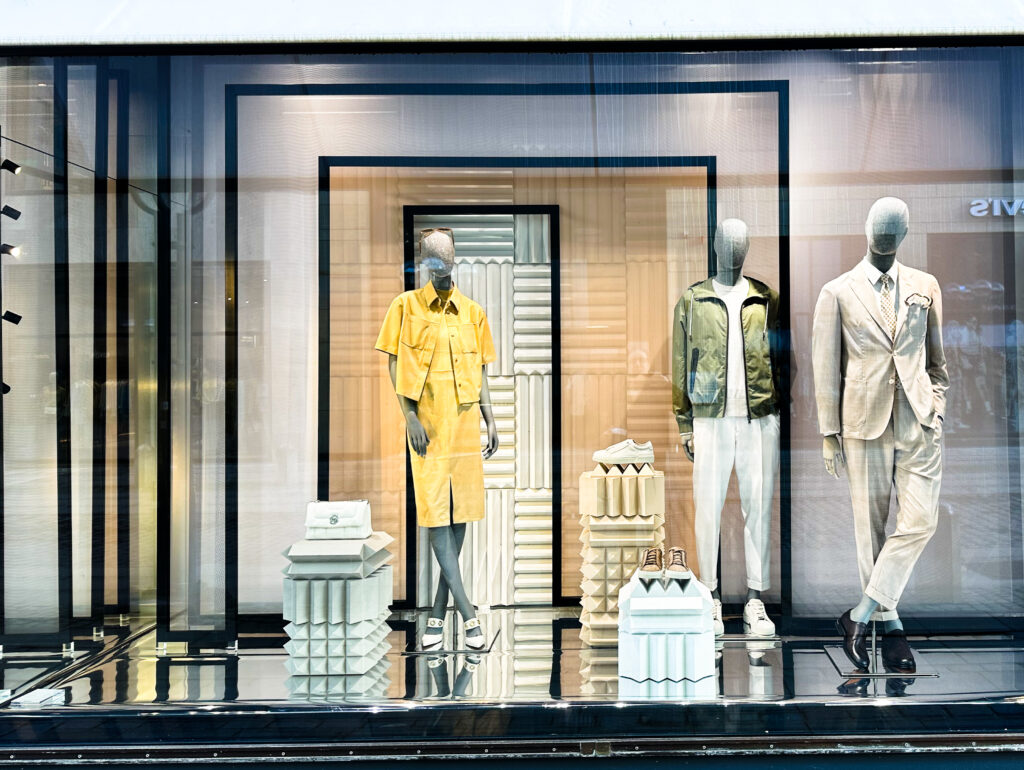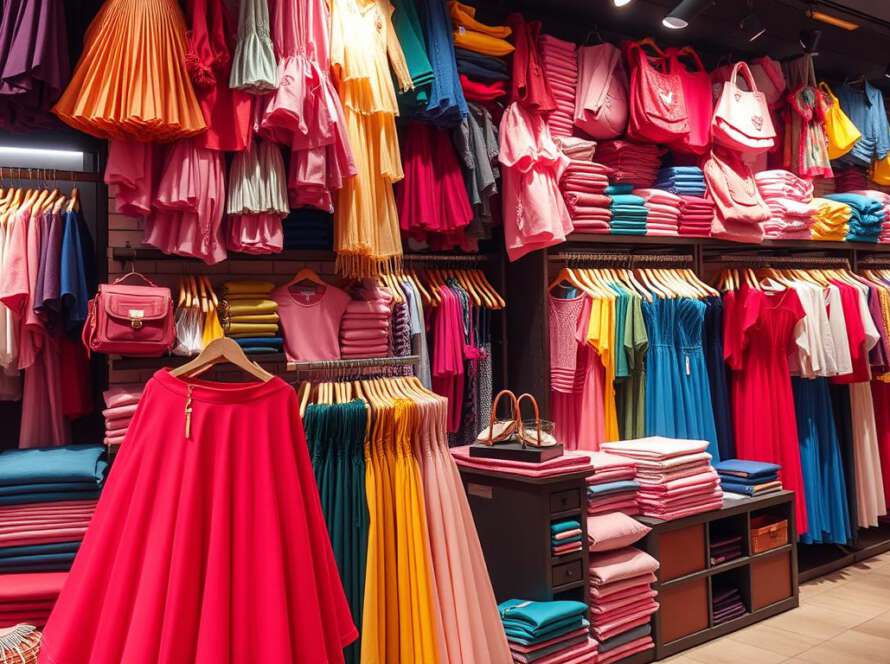In today’s retail world, making eye-catching seasonal and thematic displays is key. These displays not only grab people’s attention but also help bring more customers into our stores. By showing off our brand and the latest trends or seasonal events, we can get more people interested in shopping. This can lead to more sales and loyal customers.
Let’s explore how these displays can change our stores and make shopping better for everyone.
Key Takeaways
- Seasonal displays enhance customer engagement and draw foot traffic.
- Thematic displays can effectively reflect current trends and brand identity.
- Well-designed displays boost interest in retail and can lead to increased sales.
- Creating a story through visual merchandising strengthens customer connections.
- Integrating sensory elements into displays enhances the overall shopping experience.
The Importance of Retail Displays
In the competitive world of retail, understanding the role of retail displays is key. These displays are the first thing customers see, making their design and setup crucial. They not only showcase products but also create a welcoming space that invites shoppers to look around.
Why Displays Matter in Retail
Retail displays are vital for shaping the shopping experience. When well-designed, they grab attention and share a brand’s message. People often decide to buy based on what they see in these displays. This shows the importance of creativity and clear messaging.
Eye-catching displays can also make customers stay longer in stores. This longer stay can lead to more sales.
Understanding Customer Behavior
To make our displays better, we need to understand how customers behave. Studies show that things like color, layout, and theme play big roles in their choices. By using these insights, we can create displays that speak to customers’ needs and encourage them to interact with our products.
A well-made display can turn a quick look into serious consideration. This is how we turn a glance into a decision to buy.
Types of Seasonal Displays
Seasonal displays help us connect with customers all year. Each season brings its own chance to tell stories through visuals. This makes our stores welcoming and timely. Let’s dive into some exciting themes for spring and summer, and the cozy vibes of fall and winter.
Spring and Summer Themes
Spring is all about new beginnings and bright colors. We can use flowers, soft colors, and outdoor gear. These elements bring the outdoors inside, making our space lively.
Items like gardening tools, outdoor furniture, and seasonal clothes fit perfectly with spring. Our displays can inspire people to enjoy the outdoors. This turns our store into a place of joy and energy.
Fall and Winter Inspirations
When it gets cooler, we focus on warmth and coziness. This is the time to show off products that make people feel snug and connected. Earthy tones in fall remind us of the season’s beauty.
Winter is all about whites, blues, and sparkles. It’s the perfect time for cozy blankets, warm drinks, and festive decorations. These items make our store a welcoming place for the holiday season.
| Season | Themes | Product Ideas |
|---|---|---|
| Spring | Floral, Bright, Outdoor | Garden Tools, Outdoor Furniture, Seasonal Apparel |
| Summer | Vibrant, Nautical, Travel | Beach Towels, Picnic Supplies, Travel Gear |
| Fall | Warm, Earthy, Cozy | Blankets, Autumn Apparel, Home Decor |
| Winter | Festive, Chill, Comfort | Holiday Decorations, Warm Beverages, Gift Items |
Creating a Thematic Display
Designing a thematic display is a fun way to connect with our customers. We need to pick a theme that our audience will love. This could be based on holidays, cultural events, or local celebrations.
Once we choose a theme, we select colors and textures that make it pop. These choices are key to making our display visually appealing.
Selecting a Central Theme
A good theme is the heart of our display. It could be about a holiday, a festival, or a popular topic. This theme should show off our brand’s values and personality.
By choosing themes that are relevant and timely, we can start conversations. This draws people into our space and makes them interested.
Color and Texture Choices
Colors and textures are important for our display. We use contrasting colors to grab attention and create a lively look. Texture adds depth and makes our displays welcoming.
For example, mixing rustic wood with fancy fabrics can create a cozy feel. This thoughtful mix makes our display more engaging and attractive to our customers.
Engaging Customers with Seasonal & Thematic Displays
Seasonal and thematic displays are key for businesses to engage customers. They do more than just attract attention. They spark curiosity and excitement in our offerings. By using seasonal strategies, we improve customer interaction, making our brand more meaningful.
Our seasonal themes tell powerful stories. They evoke emotions, memories, and hopes, linking our products to customers’ lives. This bond builds loyalty, as customers see us as part of their traditions.
- Seasonal strategies refresh our marketing and create buzz.
- Thematic marketing makes experiences memorable through visual stories.
- Engaging displays boost dwell time, letting customers explore more.
We use vibrant colors, textures, and layouts to enhance the experience. By embracing the seasons, we introduce new ideas that keep our audience interested. This keeps customers connected to our brand all year.
| Key Strategy | Customer Engagement Impact | Example |
|---|---|---|
| Seasonal Themes | Creates emotional connections | Winter wonderland displays |
| Interactive Elements | Encourages exploration | Touch and feel products in displays |
| Visual Storytelling | Increases brand recall | Halloween-themed merchandise arrangement |
Seasonal and thematic marketing boost engagement and strengthen our bond with customers. By changing our displays with each season, we create a lively shopping space that connects with our audience.
Enhancing the Shopping Experience
Today, making shopping fun and engaging is key. We can do this by using sensory elements and telling stories through our displays. These methods help customers remember their visit and feel a stronger connection to our brand.
Utilizing Sensory Elements
Sensory marketing is very important. It uses sound, scent, and touch to make customers feel something. For example, soft music can set a nice mood, and certain smells can bring back happy memories.
Touching products also helps customers connect with them. This makes their shopping experience better.
Creating a Story with Your Displays
Storytelling in retail makes our displays exciting. It lets customers connect with products on a deeper level. We use props, creative layouts, and themes to guide them through a fun shopping journey.
This approach makes our displays look great and gives them a purpose. It makes shopping more enjoyable and meaningful.
Key Elements for Successful Displays
In retail, successful merchandising relies on display techniques. These include lighting and how products are placed. By using these, we make a space that draws in customers and encourages them to buy. Let’s dive into these important parts.
Lighting Techniques
Lighting is key in retail displays. It sets the mood and points out certain products. We use different light levels and spotlights to make featured items stand out.
Good lighting not only grabs attention but also shapes the mood of our space. This can greatly affect how customers feel and act.
Product Placement Strategies
Where we place products is crucial for visibility and guiding customers. The ‘Z’ pattern helps customers move naturally, showing off products. This pattern leads the eye to important spots, making sure each item gets noticed.
Using smart display techniques helps us match product placement with how customers move. This leads to better merchandising results.
| Display Element | Impact |
|---|---|
| Lighting | Enhances product features and creates emotional connection |
| Product Placement | Guides customer movement and increases visibility |
| Display Techniques | Integrates multiple elements for cohesive customer experience |
Utilizing Technology in Displays
Technology is changing how we connect with customers in retail. Using digital signage and interactive displays can boost our marketing. It makes shopping more fun and engaging.
Digital Displays and Signage
Digital signage changes the game by letting us update content easily. We can show off deals, seasonal themes, and product info in seconds. For example, we can swap out displays for new graphics or offers anytime.
This keeps our messages current and grabs attention. It also helps sell more as we match our displays with what’s trending.
Interactive Elements for Engagement
Adding interactive parts to our displays makes a stronger bond with customers. Features like touch screens and AR let people explore and play. This makes their visit more enjoyable and they spend more time with us.
Interactive displays make shopping better and help people learn more about what we offer.
| Feature | Benefits | Examples |
|---|---|---|
| Digital Signage | Real-time updates, attention-grabbing | Promotional videos, seasonal graphics |
| Interactive Displays | Enhanced customer engagement, increased dwell time | Touch screens, AR experiences |
| Analytics Integration | Invaluable customer insights, improved targeting | Data tracking customer interactions |
Using tech in our displays makes shopping more fun and engaging. This focus on innovation boosts the customer experience. It also helps our brand stand out in a crowded market.
Seasonal Promotions and Sales
Planning effective seasonal promotions can really boost our retail success. By matching these promotions with our eye-catching displays, we offer a complete shopping experience. This experience connects with our customers. Thoughtful retail sales strategies help us increase foot traffic and sales during busy times.
Planning Promotions Around Displays
Linking our seasonal promotions with our displays makes shopping more exciting. We use themed displays to highlight special offers. This not only boosts sales but also makes the shopping area more appealing. Here are some important tips:
- Use eye-catching displays to show off promotional products.
- Plan promotions around big events, like holidays or back-to-school.
- Use seasonal themes in pricing to grab customers’ attention.
Leveraging Social Media for Advertising
Using social media marketing is a great way to spread the word about our promotions. By posting high-quality images and videos of our displays, we can attract more customers. This helps us create a buzz around our seasonal offers.
Customer Feedback and Adjustments
Listening to what our customers say can really help us improve. By gathering their feedback, we learn what they like and what we can do better. This helps us make our displays more appealing to them.
Gathering Customer Insights
We use different ways to get customer feedback. Surveys, in-store comments, and social media polls are some of them. Each method gives us valuable insights.
- Surveys at checkout
- Feedback forms available throughout the store
- Direct interactions with staff for immediate responses
- Online platforms for post-purchase feedback
Adapting Displays Based on Feedback
After we get the feedback, we make changes to our displays. These changes can be:
- Reorganizing product placement to emphasize popular items
- Changing color schemes based on preferred aesthetics
- Enhancing sensory elements that attract customer attention
- Incorporating seasonal themes that align with customer interests
These adjustments help us meet customer preferences and improve our sales. By listening to feedback, we keep our displays fresh and engaging.
Visual Merchandising Tips
We know how important good visual merchandising is in retail. Making displays that look great and work well can make shopping better. It’s all about mixing looks with usefulness to attract and guide customers.
Balancing Aesthetics with Functionality
When we aim for eye-catching displays, we must keep things practical. The best visual merchandising finds a balance. It makes sure products are easy to see and touch, encouraging customers to explore.
- Strategic placement of products to enhance visibility.
- Utilization of colors and textures that evoke emotions and draw attention.
- Clear pathways for customers to navigate displays effortlessly.
Consistency Across Multiple Displays
Keeping displays consistent is key to showing our brand’s image. Using the same themes and looks helps customers remember us. Here’s how to keep things consistent:
- Adopt a cohesive color palette that resonates with our brand identity.
- Utilize similar props and fixtures for all seasonal displays.
- Regularly update displays to reflect any changes in product offerings while adhering to established design guidelines.
By focusing on both visual merchandising and retail consistency, we can create an engaging shopping environment. This delights customers and makes them want to come back.
| Display Element | Aesthetic Focus | Functional Purpose |
|---|---|---|
| Color Scheme | Attractive visual appeal | Guides customer emotions |
| Product Arrangement | Visually structured layout | Facilitates easy access |
| Lighting | Enhances visual impact | Highlights products effectively |
Collaborating with Local Artists and Designers
Working with local artists and designers makes our offerings more vibrant and engaging. This partnership brings in fresh ideas and strengthens our community ties. It shows our commitment to supporting the local economy and building a genuine connection with our customers.
Benefits of Local Partnerships
Collaborating with local artists has many benefits:
- Fresh Perspectives: Local artists bring unique ideas that can change our displays.
- Community Engagement: These partnerships show our love for local culture, building customer loyalty.
- Economic Support: Supporting local talent helps our community grow economically.
Showcasing Community Talent
Using local artists’ work makes our spaces beautiful and connects with our audience. It celebrates our community’s richness, allowing customers to feel a personal connection. By showcasing local talent, we create a story that customers want to support, building pride and connection.
Case Studies of Successful Displays
Looking at retail case studies gives us great insights. We see how top retailers engage customers with their displays. By studying their strategies, we can learn to improve our own displays.
Examples from Leading Retailers
Apple is known for its simple yet striking displays. They use open space and smart product placement. This makes their displays modern and eye-catching.
Target is another great example. They change their displays with the seasons to keep things fresh. Their use of bright colors and textures grabs customers’ attention and ties in with their promotions.
Lessons Learned from Each Case
From these examples, we learn a few important things:
- Consistency is key; brands should have a unified look in all their displays.
- Displays should highlight important products that customers want.
- Changing displays with the seasons keeps shopping exciting.
These lessons guide us in creating displays that not only attract customers but also make our stores better.
| Retailer | Display Style | Key Features | Best Practices Identified |
|---|---|---|---|
| Apple | Minimalistic | Open space, clean lines | Focus on product visibility |
| Target | Dynamic and Vibrant | Seasonal updates, bold colors | Regularly refresh displays |
Conclusion
Seasonal displays are key to keeping customers engaged and boosting sales. Creating displays that grab attention is crucial in today’s market. By understanding what customers like, we can make displays that improve shopping experiences.
We’ve talked about how to make seasonal displays work. This includes using sensory elements and teaming up with local artists. Studies show that well-made displays can bring in more customers and sales. Let’s aim to create experiences that make customers feel connected to our brands.
Using seasonal displays is vital for keeping customers interested. By doing this, we can turn our stores into places that customers love to visit. This will help us stay successful in a changing market.
FAQ
What are seasonal displays and why are they important?
How can thematic displays enhance customer engagement?
What elements should we consider when creating a seasonal display?
How can sensory elements improve retail displays?
What role does lighting play in retail displays?
How do we effectively use technology in retail displays?
What strategies should we use for promoting seasonal displays?
How can we gather and utilize customer feedback on our displays?
Why is consistency important across multiple displays?
How can collaborating with local artists help our displays?
Can you provide examples of successful retail displays?



